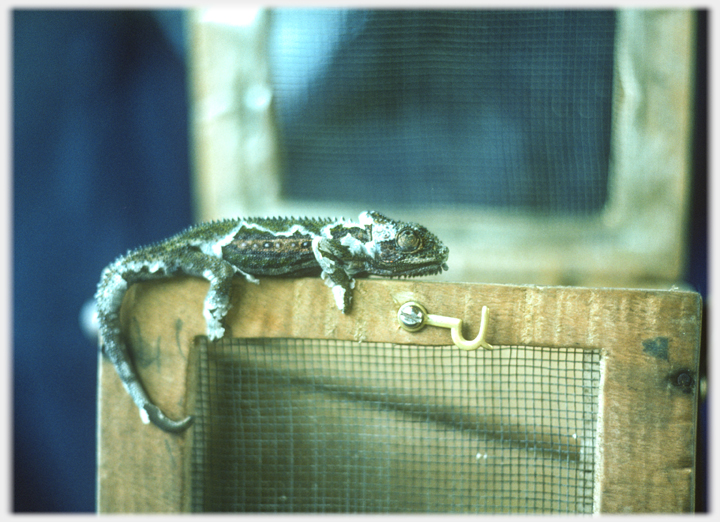
I Ching
The dark begets the light and the light begets the dark in ceaseless alternation, but that which begets this alternation, that to which life owes its existence, is the Tao with its law of change.
Richard Wilhelm (1923)

Chameleons are synonymous with change. In the Book of Change, the
light
 A page on light.
A page on light.
and the dark are the two primal powers of nature, these powers assume the form of two types of line, respectively, the unbroken and the
broken.
 Hexagrams, change and words.
Hexagrams, change and words.
Many pairs echo this dichotomy: yang/yin, active/passive, male/female. These all speak of generation and regeneration; a
seething
 A page taking up another famous Greek aphorism; Heraclitus' idea that all is flux.
ceaseless circling which endlessly embodies
change
A page taking up another famous Greek aphorism; Heraclitus' idea that all is flux.
ceaseless circling which endlessly embodies
change
 A page on the importance of change in our lives.
for us. The yang-yin circle diagram encapsulates this constant transformation, and beyond and behind this lies the ineffable
Tao.
A page on the importance of change in our lives.
for us. The yang-yin circle diagram encapsulates this constant transformation, and beyond and behind this lies the ineffable
Tao.

A poet's way of seeing the hexagrams.
On matters more effable, our now venerable transliteration of this book is: ‘I Ching’. It is pronounced more like ‘ee jing’ and means ‘Classic Book (Ching) of Change (I)’ The ‘I’ bit is the ancient character for change, and looks like this: 易. Two accounts are offered of the character’s origins, it may represent the sun and the moon as jointly governing the changing seasons, or those may be the four legs of that most changeable of animals - the chameleon.
Richard Wilhelm’s German version of the I Ching is probably the most famous of all renderings, and was translated from the German into English by Cary Baynes in 1949. It offers a detailed commentary on the so called ‘Ten Wings’ which, although written much later than the core text, are regarded as key parts of the book. The quote is from the wing called ‘The Great Commentary’, Part I, Chapter V, paragraph 1. Page 297 of the Penguin 1989 edition. The range of translations available is vast. Outstanding are those of James Legge (1882), John Blofeld (1966), Rudolf Ritsema & Stephen Karcher (1995), Alfred Huang (1998) and David Hinton (2015)
This chameleon was travelling towards Edinburgh (by train) as I was in 1976.
Above, hovering on blue introduces a link: click to go, move away to stay.

Saturday 22nd January 2022
 ...guide to this site
...guide to this site